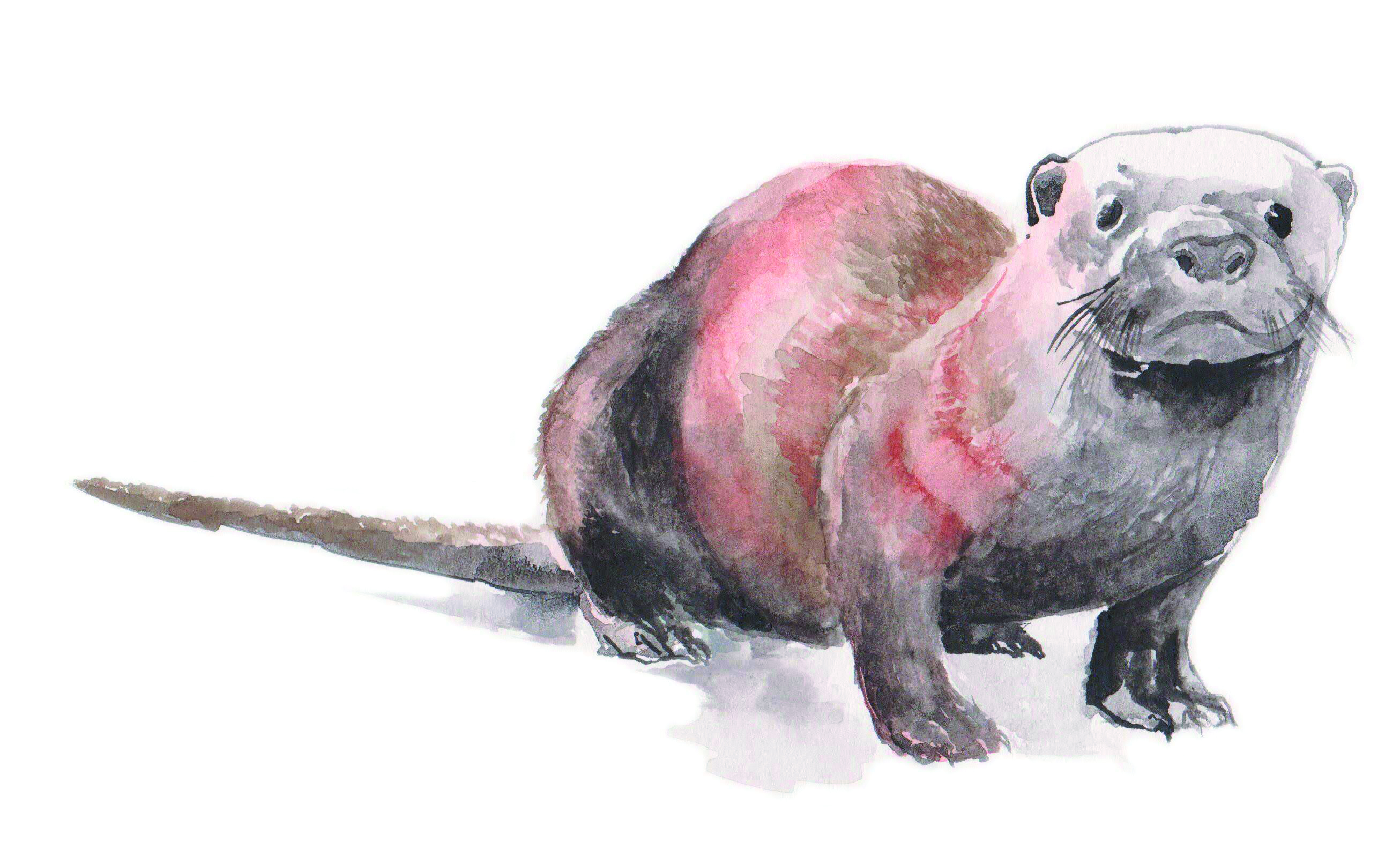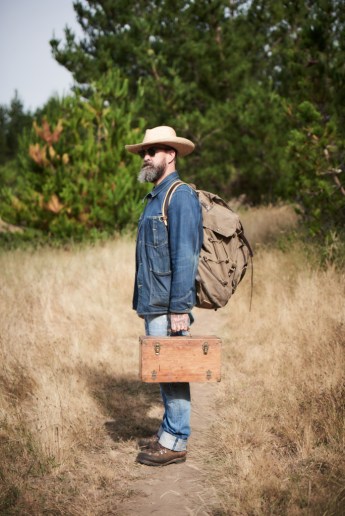Take a Walk with Artist/Naturalist Obi Kaufmann
Ojai Area Event Takes Place June 29

Near the end of his most recent book on California’s natural history, The State of Water, the artist, poet, and naturalist Obi Kaufmann includes a two-page watercolor painting of a river otter, a freshwater species once common in northern California. This charismatic animal had not been seen in the Bay Area for fifty years when in 2012, a river otter showed up in the Sutro Baths area of San Francisco. Soon nicknamed Sutro Sam, the otter attracted crowds, and before long, naturalists found other river otters living in and around the Bay Area. A species once thought to be locally extinct had somehow — despite all the human obstacles — found its way back home.
For Kaufmann, who has devoted his professional life to chronicling the incalculable vastness and beauty of natural life still to be found in the lands of California, his painting of the otter means “far more than just a cute aquatic predator regaining a foothold — it is a symbol of us, recognizing the way to our future legacy.”

This is how Kaufmann works: He finds a part of California’s nature, paints it, maps it, and in essence brings it to life on the page, for its own sake, for its future, and for the benefit of humans who still care. Born into a family of scientists, he attended UCSB in the early 1990s, finding inspiration in Chumash rock art, and went on to paint, draw, and relentlessly explore the state. In adulthood, he has turned his abiding love for “this most beautiful of places” into a unique occupation.
Working with the renowned nonprofit publisher Heyday Books in Berkeley, in 2017 Kaufmann published The California Field Atlas, a modern-day masterpiece and San Francisco Chronicle bestseller that depicts with art and cartography the vast diversity of lands and creatures of California. This year, he is touring to promote his just-published The State of Water, also by Heyday, which will be the first of six books from Kaufmann on various aspects of California’s natural history, including fire.
In conversation, he notes that over the last 170 years since the white man came to California, nearly every habitat and landscape in the state has been either threatened or endangered, and we have lost “some beautiful creatures,” including the grizzly bear still depicted on the state flag. But he adds that the extinction rate in the state remains low — less than one percent. And he points to comebacks. Although the construction of the enormous Friant Dam on the San Joaquin River in 1942 ended an annual spawning of millions upon millions of salmon, this year — despite the dam and the recent drought — scientists and fisherfolk managed to restore a small run of spring chinook for the first time in 65 years.
“Listen to too much media, and it’s kind of a surprise to find out that we’ll make it to next Tuesday,” he remarks sardonically. He notes that in 2007, the Zaca Fire burned over 240,000 acres in the Santa Barbara backcountry, but fifteen years later, “only the oldest oaks are still showing signs that there was a Zaca Fire. That’s where Ojai will be twenty years from now, after the Thomas Fire.”
In the Ojai area on Saturday, June 29, from 9 a.m.-3 p.m., Kaufmann will lead a morning walk to Matilija Creek with ecologist and guide Lanny Kaufer, followed by a painting demonstration and a talk indoors. The cost is $31. Register at herbwalks.com.




You must be logged in to post a comment.